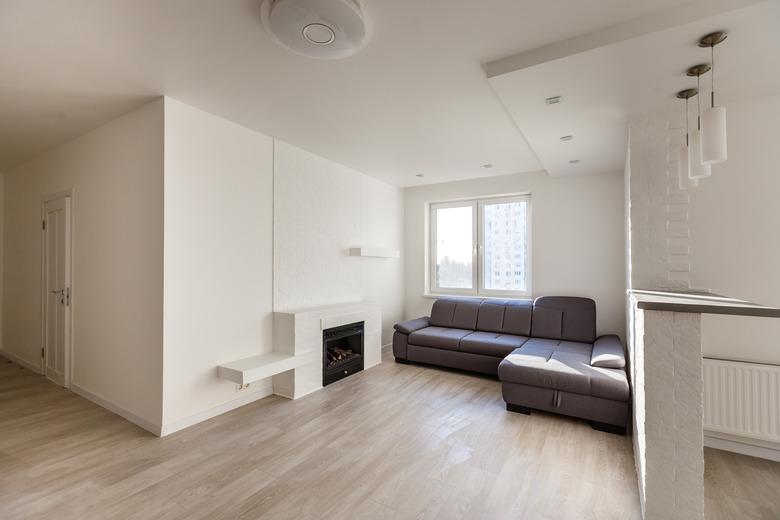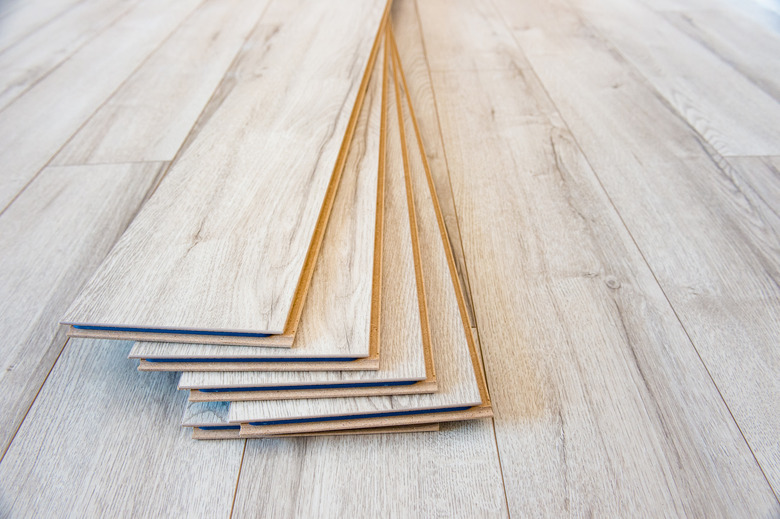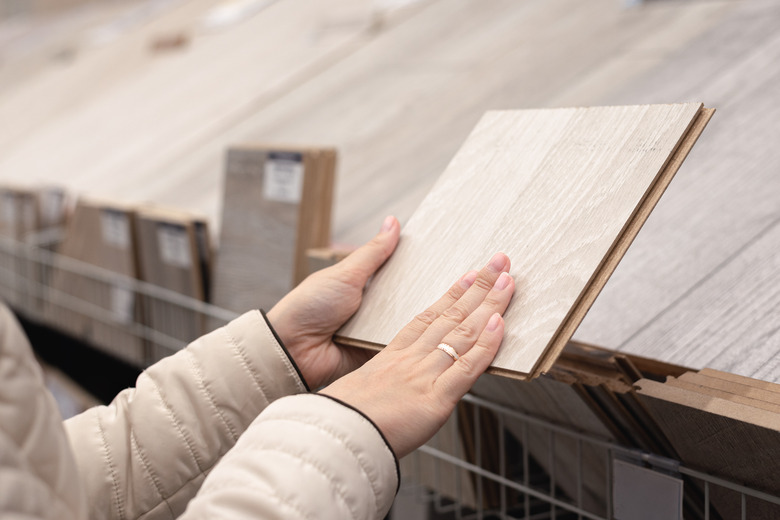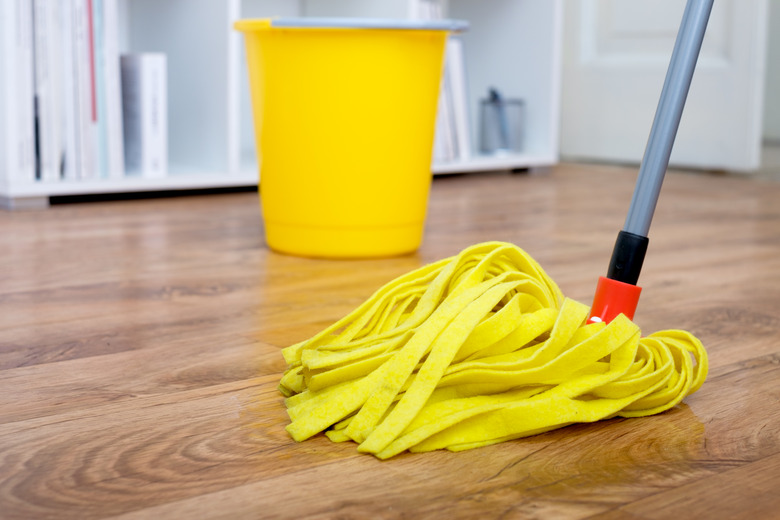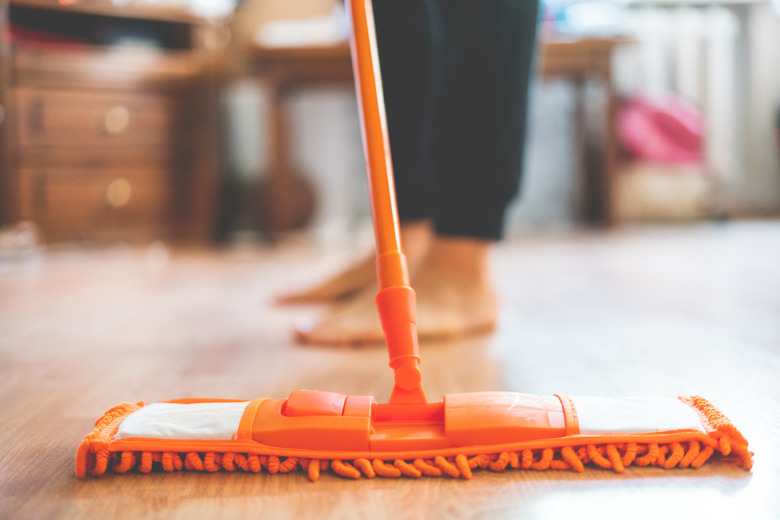Waterproof Laminate Flooring: What You Need To Know
Modern laminate flooring products offer easy DIY installation, durability and a wide variety of gorgeous designs, including many with a wood look that mimics expensive hardwood flooring. Unfortunately, laminate's one drawback has always been that it isn't waterproof. Though many people love the look, laminate flooring simply isn't suitable for bathrooms, kitchens or laundry rooms because of this limitation.
Many companies now claim that they've found a solution to this problem and offer their customers a line of waterproof laminate. Does this seem too good to be true? That's because it is. Trying to buy a truly waterproof laminate floor is like searching for a unicorn because all laminate flooring is susceptible to water damage. However, you can find laminate flooring options that are more moisture-resistant than standard laminate.
Waterproof Versus Water-Resistant
Water-resistant and waterproof aren't the same thing, and it's important to understand the difference. Waterproof materials are impervious to water, meaning water cannot damage them or cannot pass through them. Usually it does not mean both. Waterproof luxury vinyl planks are not damaged by water, but moisture can get through the seams between the planks. Sheet vinyl creates a waterproof barrier, but the flooring can be damaged by moisture from below (when laid over concrete, for example).
Water-resistant flooring typically has a tough top surface that is highly moisture-resistant, while the materials below the top are more prone to moisture damage. In the case of laminate, the top layer is a hard, clear finish that resists moisture penetration. But if water lingers on the floor, it can seep into the joints between the flooring planks and into the fiberboard core of the flooring, which is highly prone to moisture damage. In addition, any damage to the surface finish, including chips, gouges or deep scratches, can expose the core to moisture.
Why Laminate Isn't Waterproof
According to laminate manufacturer Armstrong Flooring, laminate floors consist of four layers. The bottom layer is a backing that stiffens the floor a bit and protects it from warping. The next layer is made of high-density fiberboard (HDF) and is the core of the flooring. The floor's design gets printed on top of the HDF layer, and then a top wear layer coats it to protect the floor.
The floor's wear layer does offer some protection against spills, but it by no means makes it waterproof flooring. Because there are gaps between even the most tightly laid floor planks, liquids are able to make their way past this top layer of the floor and soak into the HDF below. And it doesn't have to go very far to cause damage; often the first sign of water damage on a laminate floor is a raised or bubbled edge where the planks meet.
If you spill enough liquid on the floor, it can make its way past the laminate completely and damage the subfloor underneath. Warping and mold growth can become problems within the subfloor just as they can in the laminate floor above, causing substantial water damage for which there is no easy fix.
So, What Is Waterproof Laminate?
If there is no way to truly waterproof laminate flooring, you're likely wondering what you really get if you buy a waterproof laminate floor. One possible answer is plastic. Because the HDF layer in laminate flooring is what draws in moisture, removing it altogether can create a waterproof floor.
Unfortunately, the wood layer is what attracts many people to laminate. Vinyl floors are made in a similar fashion to laminate but use PVC (polyvinyl chloride) as their inner layer. These floors truly are waterproof, and copying their construction can help laminate floors.
It's the wood layer, however, that gives laminate the warmth and cushion that vinyl lacks. Once you remove it, you may as well opt for a vinyl floor instead. In fact, the Restorex restoration company claims that some sellers of waterproof laminate aren't selling true laminate at all. Some are actually selling vinyl plank floors rather than true laminate.
Improving Water-Resistance
While you can't truly waterproof your laminate floor, there are ways to increase its water-resistance. One is to use the proper underlayment under your flooring material. This protects the floor from absorbing moisture from underneath.
If the flooring manufacturer allows it, you can also apply some glue to your floor as you lay it. Most laminate floors click together using tongue-and-groove construction. Adding a layer of glue to the mix helps seal the gaps and holds the floor planks together more tightly. However, this means the flooring planks cannot be separated in the future, so you can't disassemble a floor to replace damaged planks.
You can also help yourself by choosing new products that are highly rated for water-resistance. These contain extra resins in their HDF layer to make them more moisture-resistant than traditional laminate. Notice, however, that all of these waterproofing solutions get implemented during the installation process. Once the floor has been laid, there is no way to apply a waterproof sealant.
Cost and Value
Even though it's not 100-percent waterproof, you should still consider buying a waterproof laminate floor. These floors do resist water better than other laminates and as such are better able to survive occasional spills or pet accidents. With a bit of care, you can even use these products in kitchens and bathrooms, which is taboo with traditional laminate floors.
As of 2019, Flooring Inc. reports that the average cost of a water-resistant laminate floor is around $3.99 per square foot, while waterproof laminate runs about $4.40 per square foot. With such a minor price difference, it makes sense to buy yourself as much water protection as you can.
Avoid Warranty Woes
The general rule is: The better the flooring, the better the warranty. Although every manufacturer is different, you'll generally find longer and better warranties on a waterproof laminate floor than you will on a water-resistant one. Don't assume, however, that your waterproof floor warranty covers water damage.
Like all warranties, your flooring warranty will only cover damage that occurs when you use the flooring as intended. Waterproof laminate strives to protect your floor from a spilled glass of juice or wet feet on a rainy day. It's not meant to deal with a deluge from a flood, a leaky pipe or a washing machine overflow. Events like these can void your warranty.
Many manufacturers also refuse to cover damage or warping caused by water underneath your floor. Waterproof laminate protects your floor from the top down, not the bottom up. It's very important to make sure your subfloor is dry or apply a moisture barrier before installing your new floor.
Laminate Care Tips
After installing your floor, taking proper care of it will help keep it looking its best and enable it to keep resisting water for as long as possible. To clean your floor, sweep or vacuum frequently to remove everyday dirt and grit, which can scratch and dull the floor's finish layer. For occasional deeper cleaning, you can wipe the floor with a cloth or sponge slightly dampened (never wet) with water or a laminate flooring cleaner. Never use a wet mop on your laminate floor, as this can easily introduce more water than your floor can handle.
It's always best to clean up spills on your laminate floor as soon as they happen. Water-resistant and waterproof floors can buy you some time if you're not home to catch a pet accident or spill right away, but aim for quick cleanups whenever possible.
To avoid scratches and protect your floor's water-repelling top coat, be very careful when moving furniture. Dragging furniture across the floor can scratch even scratch-resistant flooring. You can hide nicks and scratches with a colored crayon or touch-up marker, but doing so won't restore the floor's water-resistant wear layer.
What's in a Name?
Everyone loves saving money, but less isn't always more. Think twice about bargain shopping for flooring. You don't want to pay more for a floor just because of the name on its label, but not all laminate floors are created equal.
If you want your floor to last as long as possible, stick to known flooring brands with good reputations. Pergo, Mohawk, Armstrong and Shaw all receive excellent reviews. It's also safest to visit specialty floor dealers when shopping for your new floor. Employees who work for large chains and big-box stores aren't typically flooring experts, though some are quite knowledgeable.
When properly installed and cared for, high-quality laminate flooring can last 25 years or more. Choose a low-quality floor, however, and you'll likely find yourself replacing it in 10 years. In the long run, you save money and time by choosing a quality product from the start.

